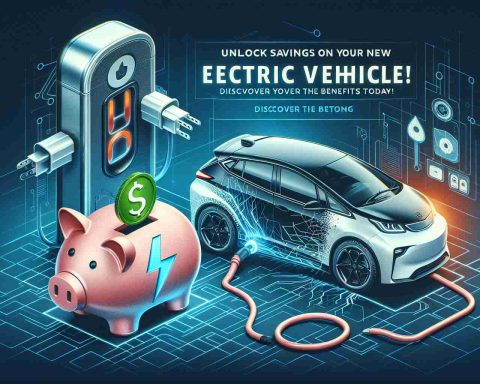The Growing Electric Scooter Market
The electric scooter market is on a remarkable trajectory, with an estimated value of USD 10.4 billion in 2023, set to soar to USD 24.8 billion by 2033. This expansion, which represents a compound annual growth rate (CAGR) of 9.1%, is largely fueled by increasing government initiatives aimed at promoting electric mobility and a shift in consumer preferences towards greener transport solutions.
Awareness regarding environmental issues and air quality is pushing more individuals to choose electric scooters, which operate without any emissions compared to traditional gasoline vehicles. Technological innovations, particularly in battery technology, have significantly improved the efficiency and affordability of electric scooters, resulting in longer operating ranges and quicker charging times.
From 2018 to 2022, the market experienced robust growth at a CAGR of 7.1%. Different regions are seeing varied growth rates, with the UK projected to grow at 8.9% and China at 8.7% between 2023 and 2033. In contrast, the US market is anticipated to maintain a steady growth rate.
Leading manufacturers are actively diversifying their offerings through new product launches and strategic partnerships. Notable players include Bajaj Auto, which is investing heavily in electric vehicle production, and Ola, which has recently debuted its line of e-scooters. As the demand for sustainable commuting options accelerates, electric scooters are becoming a vital part of urban mobility strategies worldwide.
Riding the Wave of Electric Scooter Revolution: Insights and Predictions
The Electric Scooter Market Overview
The electric scooter market is experiencing an unprecedented surge, currently valued at USD 10.4 billion in 2023, with expectations to skyrocket to USD 24.8 billion by 2033—a staggering compound annual growth rate (CAGR) of 9.1%. This growth can be attributed to a combination of government initiatives promoting electric mobility and a significant shift in consumer preference towards eco-friendly transportation solutions.
Environmental Awareness and Consumer Preferences
Rising environmental awareness is driving consumers to opt for electric scooters over traditional gasoline vehicles. Electric scooters not only contribute to reduced emissions but also support cleaner urban environments. Furthermore, advancements in battery technology have enhanced the performance of electric scooters, providing extended ranges and reduced charging times, making them an appealing choice for urban commuters.
Regional Growth Dynamics
The electric scooter market is witnessing varied growth rates across different regions. The UK is expected to experience a growth rate of 8.9%, while China follows closely at 8.7% from 2023 to 2033. In contrast, the United States market is projected to maintain a steadier growth trajectory. This divergence in growth can be attributed to local government incentives and infrastructure development, which play critical roles in the adoption of electric vehicles.
Innovations in the Electric Scooter Industry
Not only are manufacturers expanding their object lines, but they are also embracing technological innovations. The latest electric scooters are equipped with smart technologies, including mobile app integration for real-time monitoring and navigation, regenerative braking systems that help recharge batteries while riding, and advanced safety features. Companies are launching smart models to cater to tech-savvy consumers looking for enhanced performance and user experience.
Key Players and Market Strategies
Leading industry players, such as Bajaj Auto and Ola, are at the forefront of this revolution, investing strategically in electric scooter production. These companies recognize the need to diversify their offerings through innovative designs, enhanced functionalities, and aggressive marketing strategies.
A deeper look at the competitive landscape reveals that micro-mobility startups are also becoming significant players, capitalizing on urban congestion and the need for sustainable transport alternatives. Companies like Lime and Bird are setting a benchmark in scooter-sharing programs, which further complements the growing ecosystem of electric scooters.
Challenges and Limitations
Despite the positive outlook, several challenges persist. Market uncertainties related to regulations, infrastructure inadequacies, and maintenance costs can hinder growth. Additionally, competition among manufacturers is becoming intense, which may affect pricing strategies.
Future Trends and Insights
Looking ahead, we can expect several trends to shape the electric scooter market:
1. Increased Investment in Charging Infrastructure: As demand grows, there will be a need for expanded charging networks.
2. Sustainability Initiatives: Companies will increasingly focus on sourcing sustainable materials for scooters and developing eco-friendly manufacturing processes.
3. Enhanced User Experience through Technology: Augmented reality (AR) and artificial intelligence (AI) may further revolutionize how users interact with their electric scooters, offering a personalized riding experience.
4. Corporate Adoption: Businesses may employ electric scooters as part of their sustainability initiatives, offering them as commuting options for employees.
Conclusion
As the future unfolds, the electric scooter market stands on the precipice of exciting developments and growth opportunities. The confluence of technology, environmental consciousness, and a robust push for sustainable practices makes this sector one of the most dynamic in the transportation landscape.
For more insights into the electric scooter market, visit Electric Scooter Market.











